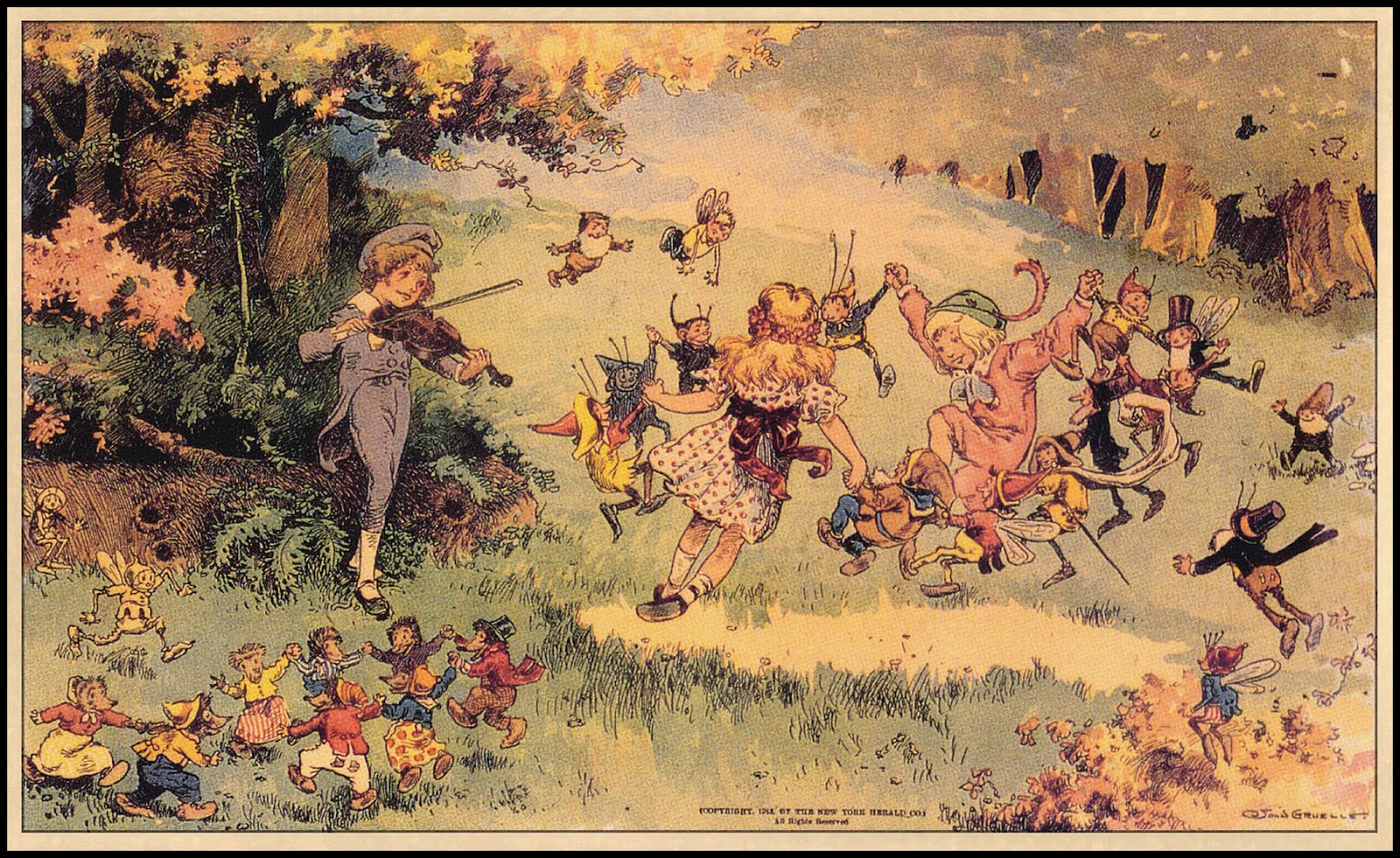This one is a bit different from the previous two unexpected creators, because whereas those two were already famous for other things before becoming involved in comic strips, Johnny Gruelle became famous for something else after he had already been working in comic strips for quite a while.
Gruelle is most famous for creating the children's toys Raggedy Ann and Andy, as well as writing and illustrating storybooks to go along with them. He also wrote and illustrated quite a few other children's books that were not related to Raggedy Ann, including a couple collections of fairy tales. Raggedy Ann was created and patented as a doll in 1915, and she first appeared in Gruelle's books and illustrations in 1918. Andy didn't come along until 1920. Previous to this, however, Gruelle had quite the career as a newspaper cartoonist.
Starting in 1903, he worked at the Indianapolis Star doing political cartoons and caricatures. Around this time he also began work at a couple of newspaper syndicates, the World Color Printing Company and the Newspaper Enterprise Association, doing various comic strips. In 1908 and 1909 he worked on the George Herriman strip "Bud Smith" as well as on his own strip "Handy Andy," but those didn't last long. He didn't get his first big break until 1911, when he began working for the New York Herald.
The story goes that the Herald was looking for new talent, and sponsored a contest in order to find it. Reportedly, around 1,500 people entered, and Gruelle won the chance to be the paper's newest cartoonist, as well as a $2,000 cash prize. It's not clear whether this story is entirely true, or was concocted by the newspaper to cover the fact that Gruelle was hired to replace the paper's star cartoonist, Winsor McCay, creator of "Little Nemo in Slumberland." McCay had been hired on by William Randolph Hearst, and was set to leave in April of 1911. It was probably a bit of an embarrassment on the part of the Herald to lose such a great talent, so they needed a suitable replacement. Gruelle began at the paper in late January of that year. There isn't a lot of documented evidence to back up the contest story, but there isn't much at all about how Gruelle originally came to be hired by the Herald, so we can't be sure. The New York Herald was certainly quite a step up from the Indianapolis Star, so those kind of unique circumstances could have helped him get the job by making him more visible to the editors at the Herald. On the other hand, Gruelle had worked enough that he wouldn't necessarily have needed to enter a contest in order to get a job there.
However it happened, the feature that he created for them was called "Mr. Twee Deedle," about a fanciful, sprite-like creature who was friends with two children, Dolly and Dickie. The stories are what you'd expect from a children's tale, and the kind of thing Gruelle would go on to be famous for a few years later. They generally involved fun romps in forested locations, with Twee Deedle always using their adventures to teach the kids something about virtue and good manners. On the whole, there wasn't a whole lot that was interesting about what was going on, but that didn't matter, because the artwork was good enough to hide that fact. It was certainly something meant for children, and most likely ones that couldn't read. If they didn't know what the words meant, they could certainly appreciate the wonderful pictures. Unfortunately, "Mr. Twee Deedle" only lasted from 1911 to about 1914. In 1913, under the pseudonym John Barton, he also did a strip for William Randolph Hearst called The Troubles of the Titmouse Twins, which, strangely, was not about titmouses, but about mice. It only ran for about 5 months in 1913.
It was after this that Gruelle created Raggedy Ann and began mainly writing and drawing children's books. He did later return to newspaper comics in 1929 with a strip simply called "Brutus," which was quite the departure from his previous work. It featured a normal suburban family, who, like most other Americans that year, fell on hard times and dealt with their poverty in hilarious ways. It was very adult, and wasn't what most had come to expect from Gruelle, though it was the kind of thing he had started out doing years ago in Indianapolis. It did end up being his longest running strip, going all the way to 1938 when he died.
For more information:
Johnny Gruelle at Comiclopedia
Mr. Twee Deedle at Toonopedia
Brutus at Toonopedia
A selection of his newspaper strips at Yesterday's Papers
Indianapolitans "as we see 'em" at The Internet Archive, which includes caricatures by Gruelle and others
